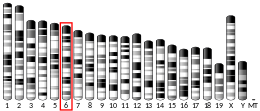
Oxytocin receptor

502118430n/aENSMUSG00000049112P30559P97926NM_000916NM_001081147NP_000907NP_001341582NP_001341583NP_001341584NP_001341585NP_001074616The oxytocin receptor, also known as OXTR, is a protein which functions as receptor for the hormone and neurotransmitter oxytocin. In humans, the oxytocin receptor is encoded by the OXTR gene which has been localized to human chromosome 3p25. The oxytocin receptor, also known as OXTR, is a protein which functions as receptor for the hormone and neurotransmitter oxytocin. In humans, the oxytocin receptor is encoded by the OXTR gene which has been localized to human chromosome 3p25. The OXTR protein belongs to the G-protein coupled receptor family, specifically Gq, and acts as a receptor for oxytocin. Its activity is mediated by G proteins that activate several different second messenger systems. Oxytocin receptors are expressed by the myoepithelial cells of the mammary gland, and in both the myometrium and endometrium of the uterus at the end of pregnancy.The oxytocin-oxytocin receptor system plays an important role as an inducer of uterine contractions during parturition and of milk ejection. Oxytocin receptors are also present in the central nervous system. These receptors modulate a variety of behaviors, including stress and anxiety, social memory and recognition, sexual and aggressive behaviors, bonding (affiliation) and maternal behavior. (See the oxytocin article for more details.) In some mammals, oxytocin receptors are also found in the kidney and heart. The oxytocinergic circuit projecting from the paraventricular hypothalamic nucleus (PVN) innervates the ventral tegmental area (VTA) dopaminergic neurons that project to the nucleus accumbens, i.e., the mesolimbic pathway. Activation of the PVN→VTA projection by oxytocin affects sexual, social, and addictive behavior via this link to the mesolimbic pathway; specifically, oxytocin exerts a prosexual and prosocial effect in this region. The receptors for oxytocin (OXTR) have genetic differences with varied effects on individual behavior. The polymorphism (rs53576) occurs on the third intron of OXTR in three types: GG, AG, AA. The GG allele is connected with oxytocin levels in people. A-allele carrier individuals are associated with more sensitivity to stress, fewer social skills, and more mental health issues than the GG-carriers. In a study looking at empathy and stress, individuals with the allele GG scored higher than A-carrier individuals in a “Reading the Mind in the Eyes” test. GG carriers, with their naturally higher levels of oxytocin, were better able to distinguish between emotions. A-allele carriers responded with more stress to stressful situations than GG-allele carriers. A-allele carriers had lower scores on psychological resources, like optimism, mastery, and self-esteem, than GG individuals when measured with factor analysis for depressive symptomology and psychological resources, along with the Beck Depression Inventory. A-allele carriers had higher depressive symptomology and lower psychological resources than GG individuals. A-allele individuals scored lower in human sociality than GG people on a Tridimensional Personality Questionnaire. AA individuals had the lowest amygdala activation while processing emotionally salient information and those with GG had the highest activity when tested using BOLD during an fMRI. A study looking at facial recognition in British and Finnish families with a single high-functioning autistic child found that a single change in the DNA had a major impact on face memory, with AA individuals having impaired SD scores.
